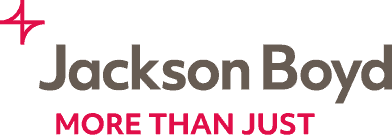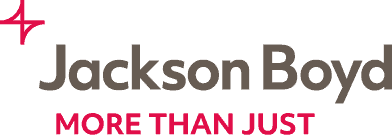The Coronavirus or Covid-19 pandemic is an unprecedented event on a global scale. There will be few whose lives have been unaffected by the virus. Within a short space of time business premises became empty as staff were sent to work from home, placed on furlough or made redundant. Schools, sports facilities, pubs and restaurants, zoos, museums and other public amenities closed their doors. While in the meantime the “key workers” from doctors and nurses and other NHS staff t police and prison officers, from supermarket works to delivery drivers, from refuse collectors to teachers continuing to teach key workers children, have continued to go out to their workplaces.
However, as the emergency measures put in pace to control the spread of coronavirus are eased, many more people will be returning to their shops, offices, factories, pubs, restaurants, schools and other usual places of work. As the number of people congregating in workplaces or travelling to and from work increases so does the risk that they could be exposed to Covid-19.
So what should your employer do to protect you in the workplace?
1. Assess the Risk
- Identify work activity or situations might cause transmission of the virus;
- Consider who could be at risk and how likely it is that they could be exposed;
- Remove the activity or situation, or if this isn’t possible, take steps to control the risk.
2. Consider who should be in the workplace
- Consider if jobs and tasks can be changed to reduce risk;
- Identify everyone who can work from home – if you can, your employer should allow you to do so;
- Assess the risks of home working and ensure employees have the equipment needed to work safely and effectively at home;
- Keep in regular contact with people working from home to help them feel they are still part of the workforce and to help their mental wellbeing;
- Where it is not possible to work from home, ensure the guidance on social distancing and hygiene is followed;
- Only work with the minimum number of people needed to carry out work tasks safely
3. Protect people who are at higher risk
- Allow clinically extremely vulnerable (shielding) workers to work from home either in their current role or an alternative role;
- Allow people to work at home where they have someone shielding in their household;
- Where people at increased risk cannot work from home, offer them the safest available roles;
4. Getting into and leaving work
- Identify where people can travel alone in their own transport (or walk, or cycle if it is safe to do so) when getting to and from work ;
- Stagger arrival and departure times so people can keep to the 2 m social distancing rules by not using entry/exit points at the same time;
- Provide handwashing facilities at entry/exit points. If this is not possible, provide hand sanitiser.
5. Provide a Safe Work area
- Arrange work areas to keep people 2 m apart;
- Mark areas using floor paint or tape to help people keep a 2 m distance;
- Provide signage to remind people to keep a 2 m distance;
- Reduce the number of people in the work area;
- Assign and keep people on the same shift working in the same teams, to limit social interaction;
- Avoid people working face-to-face where possible;
- Permit only essential trips within buildings, sites and properties;
- Restrict the amount that people rotate between jobs and equipment.
- Limit the number of people who use lifts and work vehicles.
- Reduce the number of people in high traffic areas including lifts, corridors, turnstiles and walkways.
- Stagger break times so that people are not using break rooms, canteens, rest areas or changing facilities at the same time or create additional space for people to take their breaks in;
- Use outside areas for breaks if the locations are suitable and it is safe to do so;
- Set clear guidance for the use of rest areas, toilets, showers, and changing facilities to make sure social distancing is maintained.
- Where a 2 m physical distance cannot be kept consider assigning one person per work area where this can be done;
- Keep the number of people working less than 2 m apart to a minimum;
- Use screens to create a physical barrier between people.
- Provide the appropriate Personal Protective Equipment (PPE) such as masks, gloves, overalls etc depending on your industry and the level of risk assessed.
- Continue providing the PPE that you normally use to protect workers and asses here that has to be adapted for Covid-19 risk
- Comply with industry specific guidance on reducing Coronavirus risk
6. Maintain Good Hygiene
- Frequently clean objects and surfaces that are touched regularly
- Clean at the end of each use if equipment is shared between people or between shift changeovers;
- Provide hand sanitiser for people getting in and out of vehicles or handling deliveries, if they are unable to wash their hands.
- Ensure that you have handwashing facilities that provide running water, soap and paper towels;
- Use signs and posters to increase awareness of good handwashing technique;
- Provide regular reminders on avoiding touching your face and to cough/sneeze into your arm;
- Provide hand sanitiser in multiple locations in addition to washrooms;
- Set clear guidance on how to handle goods, merchandise and materials and when cleaning procedures need to be followed.
7. Ensure Good Communication
- Provide people (including workers and others) with information on procedures, guidance or ways of working that have been introduced;
- Share this information with people before they start work;
- Share this information with visitors, customers or contractors where required. This could include signs or notices;
- Ensure good communication with those who do not have English as their first language and others who may struggle with written and verbal communication;
The guidance set out is not exhaustive. Your employer may also have to take additional steps to protect you from coronavirus risk depending on the industry you are employed in. The UK government has issued industry specific guidance. Further information can be found at https://www.hse.gov.uk. If you think you or a loved one has contracted coronavirus as a consequence of a failure by your employer or a third party to adequately protect you from the risk , get in touch with Jackson Boyd today. We offer a free consultation service and operate on a no-win, no-fee basis.





